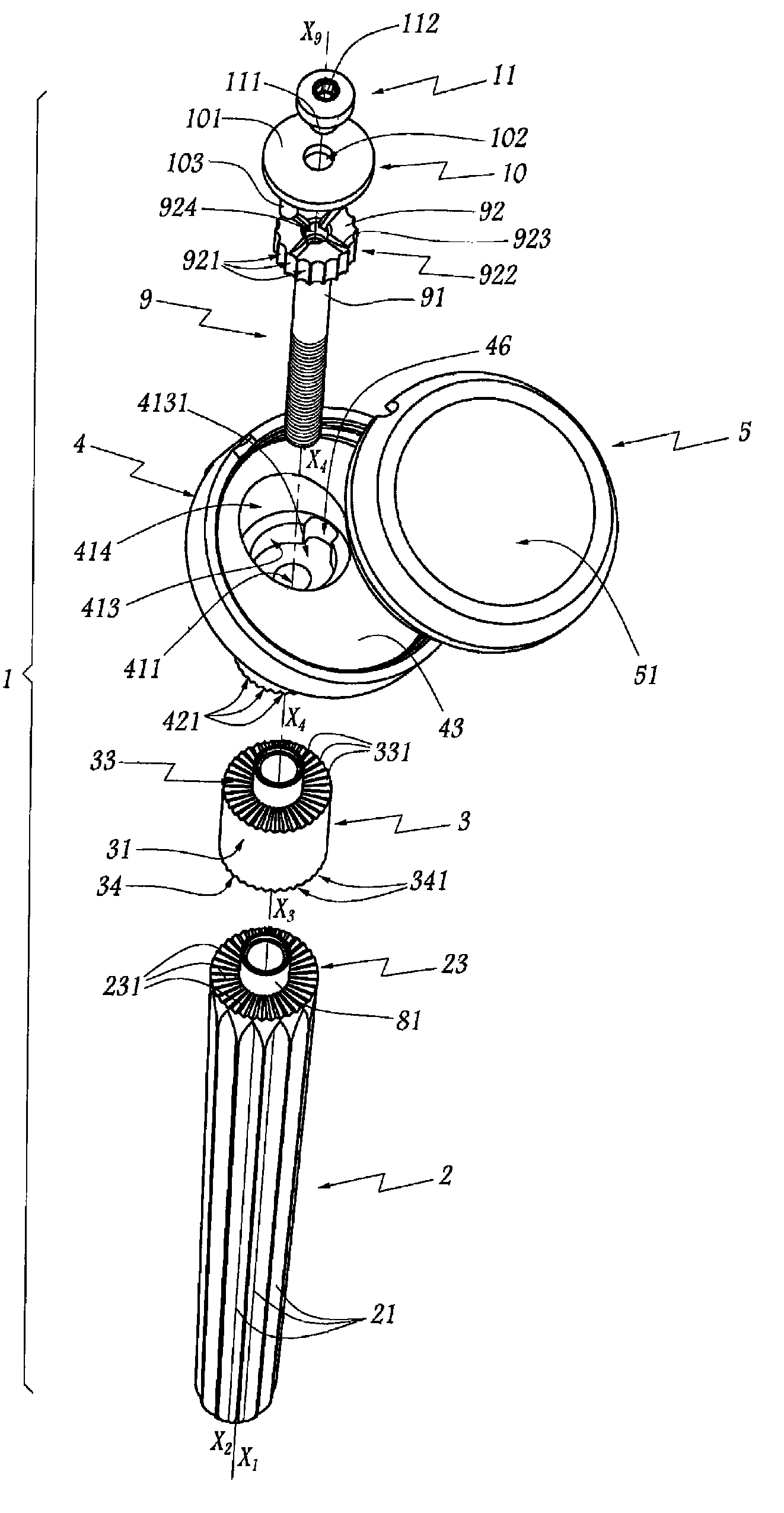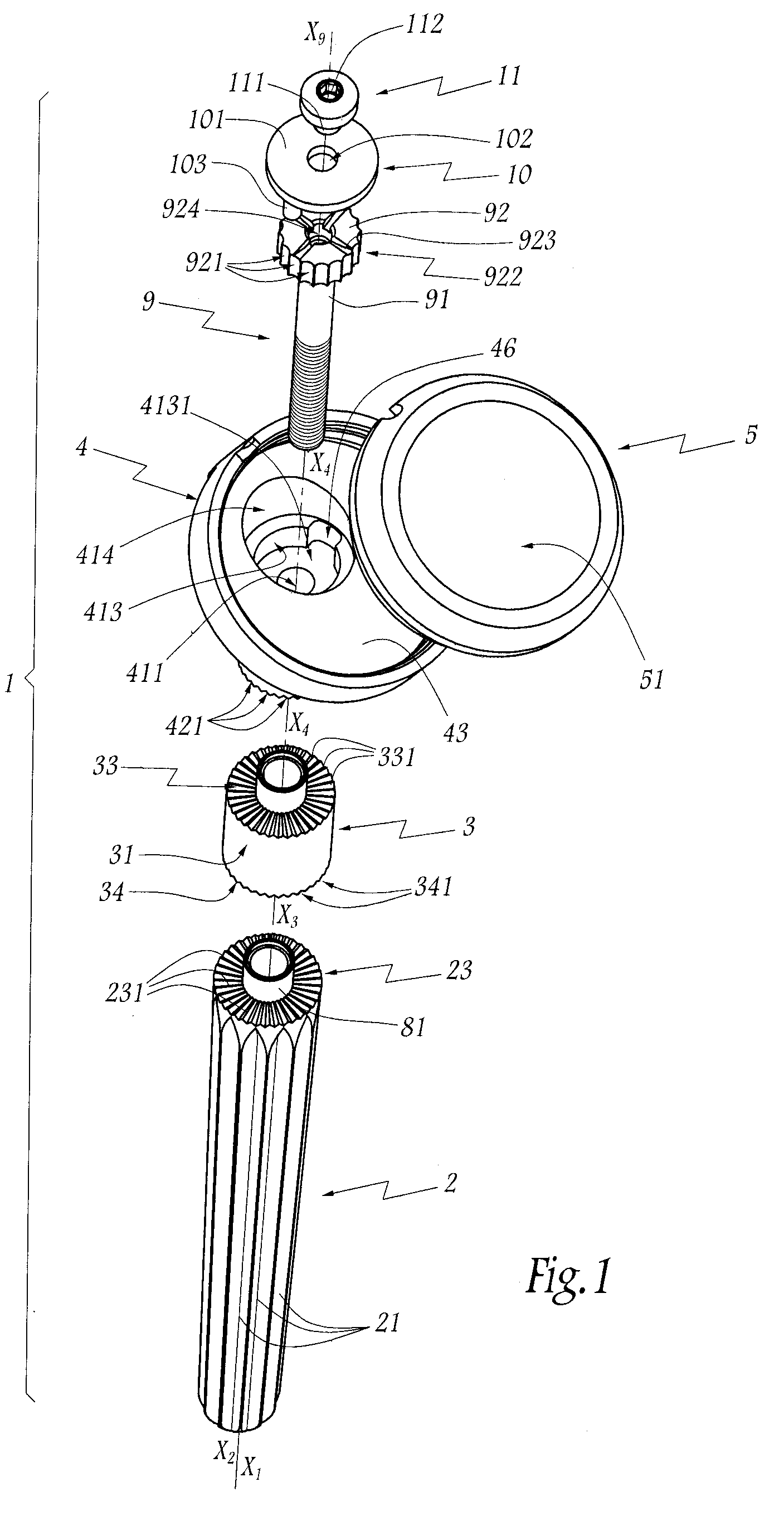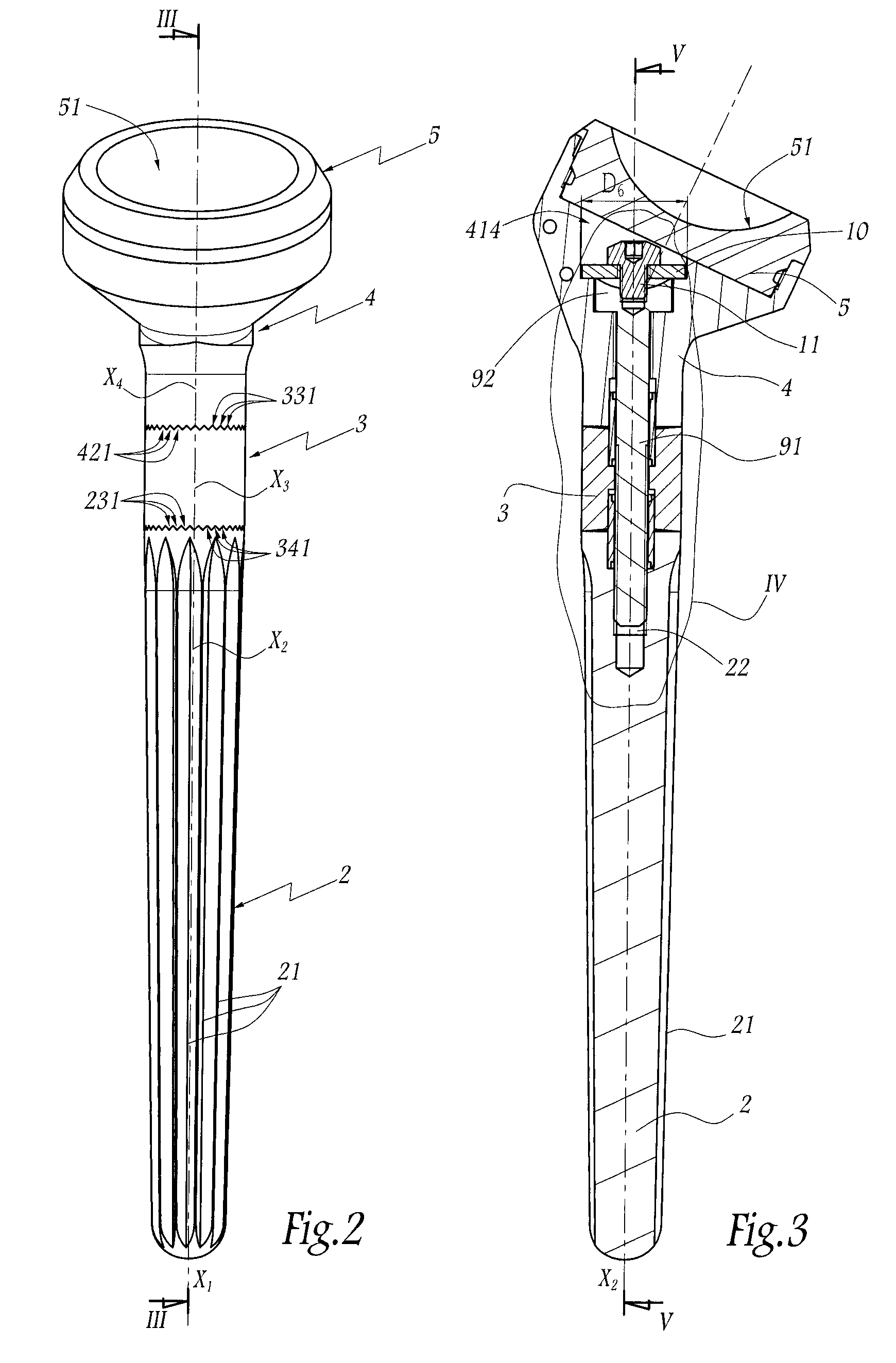Orthopedic device for an articular joint
a technology for articular joints and orthopaedic devices, which is applied in the field of orthopaedic devices, can solve the problems of aggravating the risk of disassembly of prosthetic components, and achieve the effect of ensuring the mechanical stability of the orthopaedic device and avoiding the unscrewing of the fixing screw
- Summary
- Abstract
- Description
- Claims
- Application Information
AI Technical Summary
Benefits of technology
Problems solved by technology
Method used
Image
Examples
Embodiment Construction
[0050]The humeral orthopedic device 1 of a shoulder prosthesis illustrated in FIGS. 1 to 6 comprises an anchor stem 2 which is intended to be introduced and anchored in the medullary canal of a humerus, after resection of its upper end. The stem 2 is provided with external channels 21 which are intended to facilitate its immobilisation in terms of rotation inside the medullary canal. The stem 2 is provided with an axial threaded hole 22 which extends along the longitudinal axis X2 thereof.
[0051]The orthopedic device 1 also comprises a spacer 3 which is intended to allow longitudinal adjustment of the orthopedic device 1 taking into consideration the morphology of the patient and the fitting depth of the stem 2 in the humeral medullary canal. The spacer 3 may be selected from a set of spacers having different lengths and different diameters.
[0052]The spacer 3 has a cylindrical external radial wall 31 having a circular base. The spacer 3 also has a central bore 32 whose longitudinal a...
PUM
 Login to View More
Login to View More Abstract
Description
Claims
Application Information
 Login to View More
Login to View More - R&D
- Intellectual Property
- Life Sciences
- Materials
- Tech Scout
- Unparalleled Data Quality
- Higher Quality Content
- 60% Fewer Hallucinations
Browse by: Latest US Patents, China's latest patents, Technical Efficacy Thesaurus, Application Domain, Technology Topic, Popular Technical Reports.
© 2025 PatSnap. All rights reserved.Legal|Privacy policy|Modern Slavery Act Transparency Statement|Sitemap|About US| Contact US: help@patsnap.com



